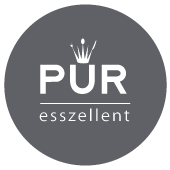How to Share Relevant Content and Resources in Catering Industry
Sharing relevant content and resources in https://tostonesinc.com/ catering industry is a great way to establish yourself as a knowledgeable professional, build relationships, and contribute to the community. Here’s how you can effectively share content and resources:
1. Identify Valuable Content:
- Regularly seek out industry news, articles, reports, and blog posts that are informative, insightful, and relevant to catering professionals.
- Focus on content that addresses current trends, best practices, innovations in menu planning, event management, food safety, or customer service.
2. Use Multiple Channels:
- Choose appropriate platforms to share your content. This can include industry forums, social media platforms (LinkedIn, Twitter, Facebook), your company blog or website, and email newsletters.
- Tailor your approach based on the type of content and the preferences of your audience on each platform.
3. Provide Context and Commentary:
- Before sharing, provide a brief introduction or commentary to highlight why the content is valuable. Explain key takeaways, insights, or trends that others in the catering industry can benefit from.
- Share your perspective or personal experiences related to the content to enrich the discussion and engage your audience.
4. Attribute Sources Properly:
- Always give credit to the original source of the content you’re sharing. Include the author’s name, publication, and a link to the original article or source.
- This not only acknowledges the work of others but also builds credibility and trust among your audience.
5. Engage with Your Audience:
- Encourage discussions and interactions around the content you share. Ask questions, seek opinions, or invite others to share their experiences or thoughts on the topic.
- Respond promptly to comments, feedback, and questions from your audience to foster meaningful conversations.
6. Create Visual Content:
- Enhance your content sharing with visuals such as infographics, charts, or images that summarize key points or statistics from the original content.
- Visual content tends to attract more engagement and can effectively convey complex information in a concise and visually appealing format.
7. Share Case Studies and Success Stories:
- Share case studies or success stories from your own catering experiences. Highlight challenges faced, strategies implemented, and outcomes achieved.
- Use these examples to illustrate best practices, lessons learned, and innovative solutions that can inspire and educate others in the industry.
8. Curate Content for Different Audiences:
- Consider the interests and preferences of your target audience when curating content. Tailor your sharing strategy to cater to event planners, corporate clients, wedding organizers, or food enthusiasts.
- Segment your content based on industry segments or specific topics to provide targeted value to different groups within the catering community.
9. Stay Consistent and Relevant:
- Maintain a regular schedule for sharing content to keep your audience engaged and informed. Consistency helps establish your presence as a reliable source of industry insights.
- Keep up with current trends and developments in the catering industry to ensure the content you share remains timely and relevant.
10. Measure Engagement and Adjust:
- Monitor the performance of your shared content by tracking metrics such as likes, shares, comments, and click-through rates.
- Use analytics tools to assess which types of content resonate most with your audience and adjust your content strategy accordingly to optimize engagement.
By sharing valuable content and resources effectively, you can contribute to the knowledge base of the catering industry, strengthen your professional reputation, and foster meaningful connections with peers and clients alike






Discussion
Leave a reply